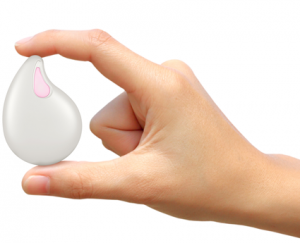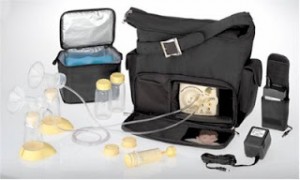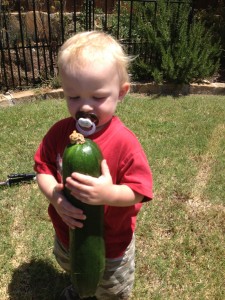The past week has brought its fair share of difficulties for our family. For starters, on Halloween the kids and I boldly ventured into Philadelphia to meet Mr. Red for the big Phillies parade. Crowded and exhausted, we witnessed everything from grown men wearing nothing but Phillies underwear, to homeless men decked out in Phillies garb (Philly fans can afford to be generous once every 25 years). We returned home without Mr. Red and my wallet. The former had an emergency arise at work, the latter was left on the train and later returned sans money. Eight canceled credit cards and $200 later, me and the kiddos were off trick or treating.
After Dad took care of the work emergency on Saturday, we awoke Sunday morning ready for some family time. We naively thought our only obligation was to prep our basement for a major construction project, an overhaul of our 80 year-old heating system, commencing on Monday. On Sunday morning as we all sat peacefully in Mass, Gianna snuggled up close to me and I began to stroke her hair. I looked down and that’s when I saw them.
Actually, it was only one disgusting louse. I quickly pulled it out of her hair and threw it on the ground.
And then I doubted.
Was it really a louse? Maybe it was a gnat or some other small bug? Maybe I had imagined the entire thing? I prayed, begging God to spare us this cross. Head lice would mean a canceled trip out of town to visit B-Mama, and a hard time finding accommodations during our heating renovation. At that moment I made a conscious decision that I would look no further. I would just sit for the rest of Mass and deal with Gianna’s hair when we arrived at home.
Once home, I quickly googled head lice. I studied pictures and then returned to Gianna’s head to see if I spotted any critters. Mr. Red held his breath and waited for me to announce our fate. Sure enough, I spotted two more live lice, and many, many, many eggs. I wanted to vomit. I asked Mr. Red to check Charlie’s head, and he quickly announced that Charlie’s hair looked identical to the “blond child with lice” photo we found online.
One shaved head and several hours of combing later, we had finished stage-one lice removal on two of our three children (the baby remains lice-free). I had yet to check my own head. With shaking hands I picked up the lice-removing comb and swept through my hair. I looked down and immediately spotted one large live louse. I held back tears as I combed again and found eggs. My head was suddenly very, very itchy. I was out of breath and panicking. Frustrated, I closed my eyes and all I could see was thousands of tiny bugs crawling all over my head. We put the children to bed and Mr. Red began an aggressive lice-removal combing regimen on my hair. Definitely true love. Helpless, I sat under bright lights, listening to REM’s Everybody Hurts, and I began to weep. I thought about my looming 30th birthday. I would now spend that birthday heatless and lice-infested. I was in the trenches of motherhood.
Getting out of the trenches required a serious battle plan. I turned to the internet, the doctor and friends for advice. One week later I celebrated a lice-free 30th birthday, with heat in my home and a new set of credit cards.
The first part of my battle-plan was education. Through research I learned that head-lice are a very common childhood problem. Outbreaks generally occur in elementary schools and daycare centers, or any other place where children gather and play. Unlike fleas, lice do not jump, but climb, and so children generally spread head-lice through shared headware (hats, scarves, jackets, combs or hairbands), or shared blankets/bedding. (It is best to tell kids not to share these personal items.) Lice need a blood source to survive, so they are not likely to live for long once they leave the human head.
If you think your child has been exposed to head lice, purchase a lice-removing metal comb from a local drugstore. Then, check out the internet or your doctors office for pictures of lice and their eggs (nits). Baby lice (nymphs) are clear white and are about the size of a sesame seed. An adult louse is about 2-3 times the size of a sesame seed and is usually a brown/red color from having fed on human blood. Lice eggs are called Nits and are a grayish/brownish/yellowish color. Nits are about the size of a poppy seed, and they are glued to the hair shaft about 1cm from your child’s head. Nits are easy to see on blond hair, but much more difficult to see on darker hair.
Resist buying lice removing shampoos. Many shampoos claim to kill lice. These shampoos are loaded with toxic chemicals, complete with warning labels for very young children and pregnant or nursing women, and I have heard mixed reviews as to the success of these shampoos. Instead of the chemicals, we opted for a 21-day intense combing program, and we have had great success.
Here are some other helpful tips for keeping everyone lice-free:
A temperature of 130 degrees kills lice. To kill lice on exposed bedding/clothing, throw it in the dryer for at least 20-30 minutes. Likewise, adults can try blow-drying their hair on a very hot setting, using a hot ceramic straightening iron, and/or washing hair with very hot water. Any clothing or items that cannot be washed can be dry cleaned (those chemicals will kill anything!), or sealed in an airtight bag for 2 weeks. Put away toys such as dress up clothes or helmets that are shared and touch the head.
Lice need air to breath. Try suffocating lice with natural oil treatments. Soak hair in oil/lotion for at least 8 hours, then wash, comb with metal lice-comb, and blow dry. I used olive oil on my head and it had the added benefit of making my hair feel very nice. Many pediatricians recommend using the facial wash cetaphil. I have heard good things about this treatment but did not try it myself. I did not try any suffication treatments on Gianna as they all seemed messy. Instead, we opted for intense, regular, and thorough combing.
Whatever treatment you chose, make sure you repeat every couple of days as most suffocation/heat treatments will not kill the eggs. Eggs hatch after 7-10 days. It takes baby nymphs 7 more days to lay eggs, so it is best to repeat treatments and keep combing for at least 2 weeks.
Finally, inform other parents of potentially exposed children about your child’s case of head lice. The social stigma attached to lice is partially the result of a mistaken belief that lice live in dirty hair. Lice are actually more attracted to clean hair. Dirt, grease, and hairspray weigh hair down and make it sticky and less likely to attract crawling bugs that have to grab onto a single strand of hair. Each live louse lays up to 300 eggs, so it is really important to inform parents promptly of an outbreak.
Here’s to lice-free living! And if you have a moment, feel free to share your lice stories.











